The german-danish Interreg-project HospiBot moves from the development state to the testing phase. For the fourth project meeting in March 2025, the project team met at Sealand University Hospital in Køge to discuss their research and development of healthcare robots. They explored cutting-edge technologies, the tangible benefits for patients and hospital staff, as well as key aspects of safety and data protection.
„Regular project meetings are essential for tracking progress and optimizing collaboration among partners. This way we ensure a common and smooth transition into the next phase of the HospiBot project.”, says Angelina Wolf, innovation consultant at the Center for Clinical Robotics at Odense University Hospital (OUH).
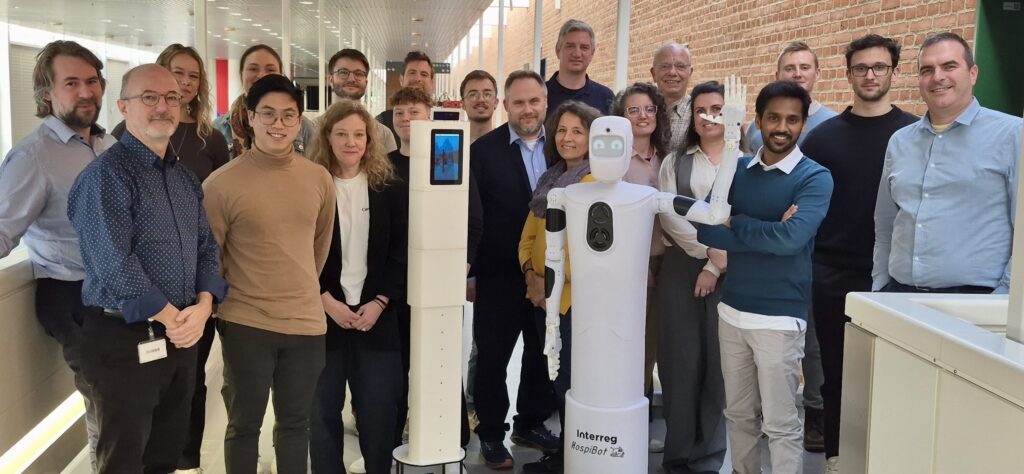
Modular, interactive, humanoid
Dr. Oskar Palinko is working on the HospiBot project together with students Peter Duc, Tamas Gabor and Anthon Petersen at the University of Southern Denmark. Their work includes developing a mobile base station that will be compatible with various robotic attachments. The result is a modular robot with corresponding modules for different use cases. One of these modules works with a voice program. This allows patients to create their own interactive stories with the robot.
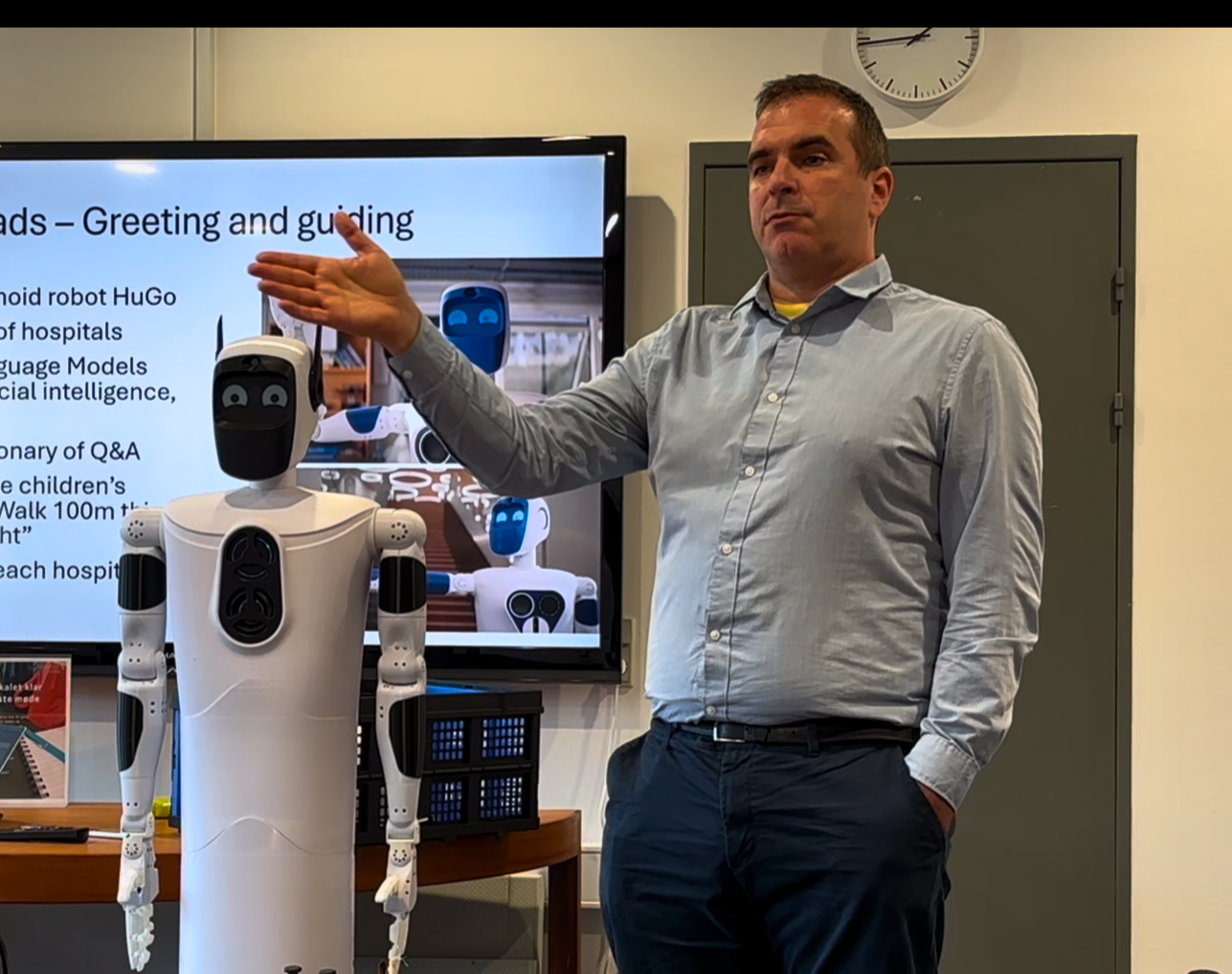
The researchers also demonstrated how easily the robot’s physical appearance can be customized. They developed over 40 interchangeable parts giving the robot different body shapes and colours.
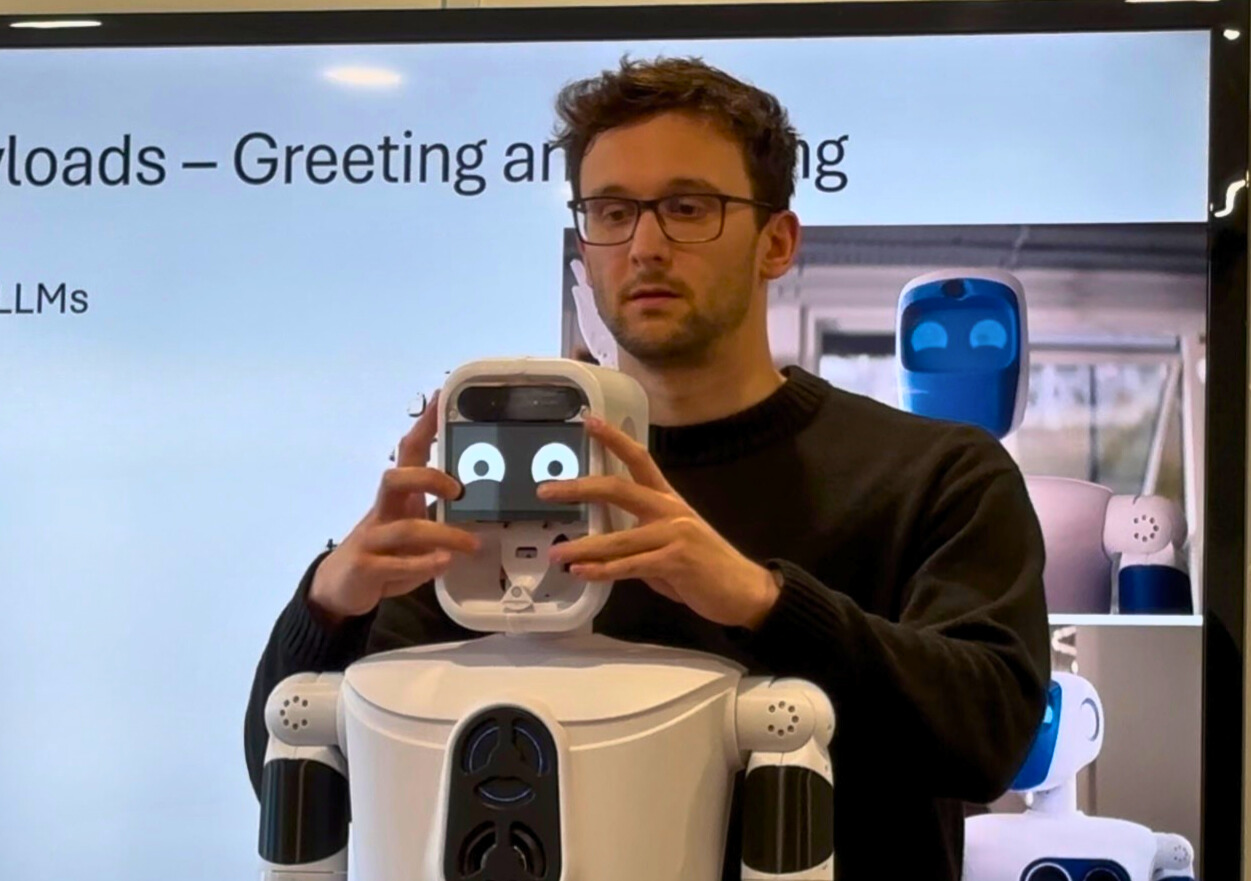
Dr. Robert Wendlandt and Chandrahas Kasoju, University Hospital Schleswig-Holstein (UKSH) in Lübeck, are researching robotic solutions for the use case of patrolling in hospitals. Therefore, the robot needs to recognize and report emergency and dangerous situations.
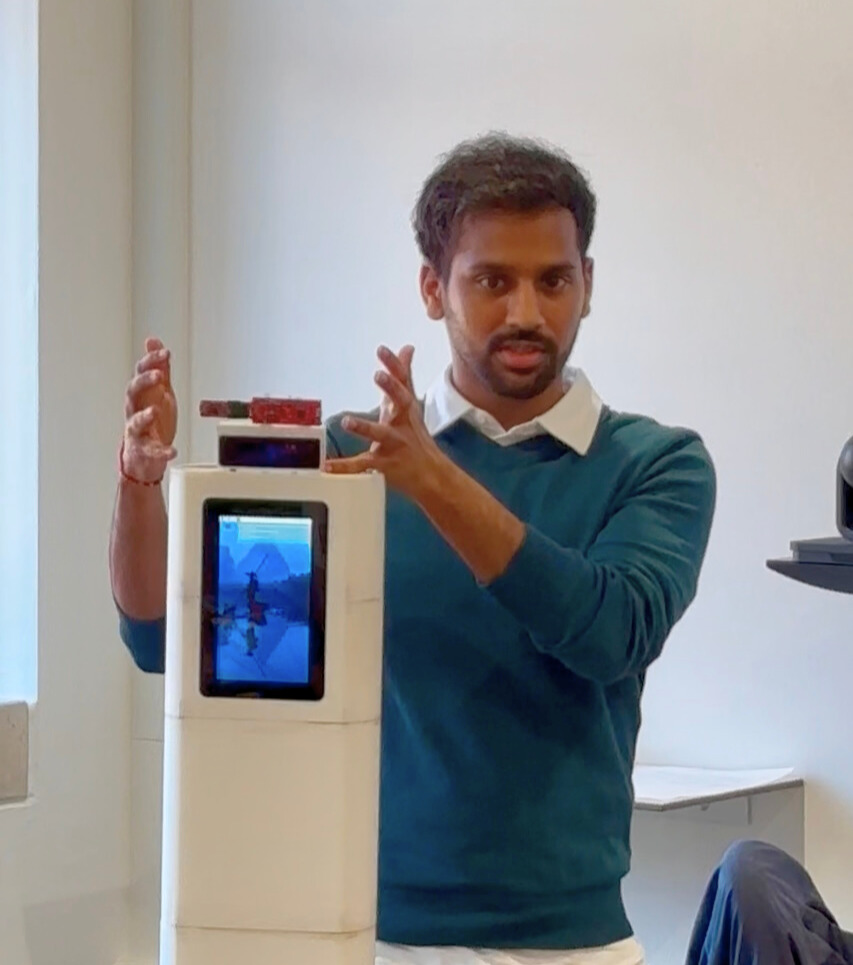
Innovation in practice
HospiBot is about to enter a new project phase: the transition from development to testing. The robotic modules will be put to the test in real-world scenarios, tailored to different use cases. Partner hospitals in Southern Denmark and Northern Germany are ready to support.
Sabine Paasch Olsen and Lilian Keene Boye are project members from the Hospital of Southern Jutland. They are responsible for the organization of the testings. Angelina Wolf is innovation consultant at the Odense University Hospital’s Center for Clinical Robotics and therefore helps to bring science into practice.
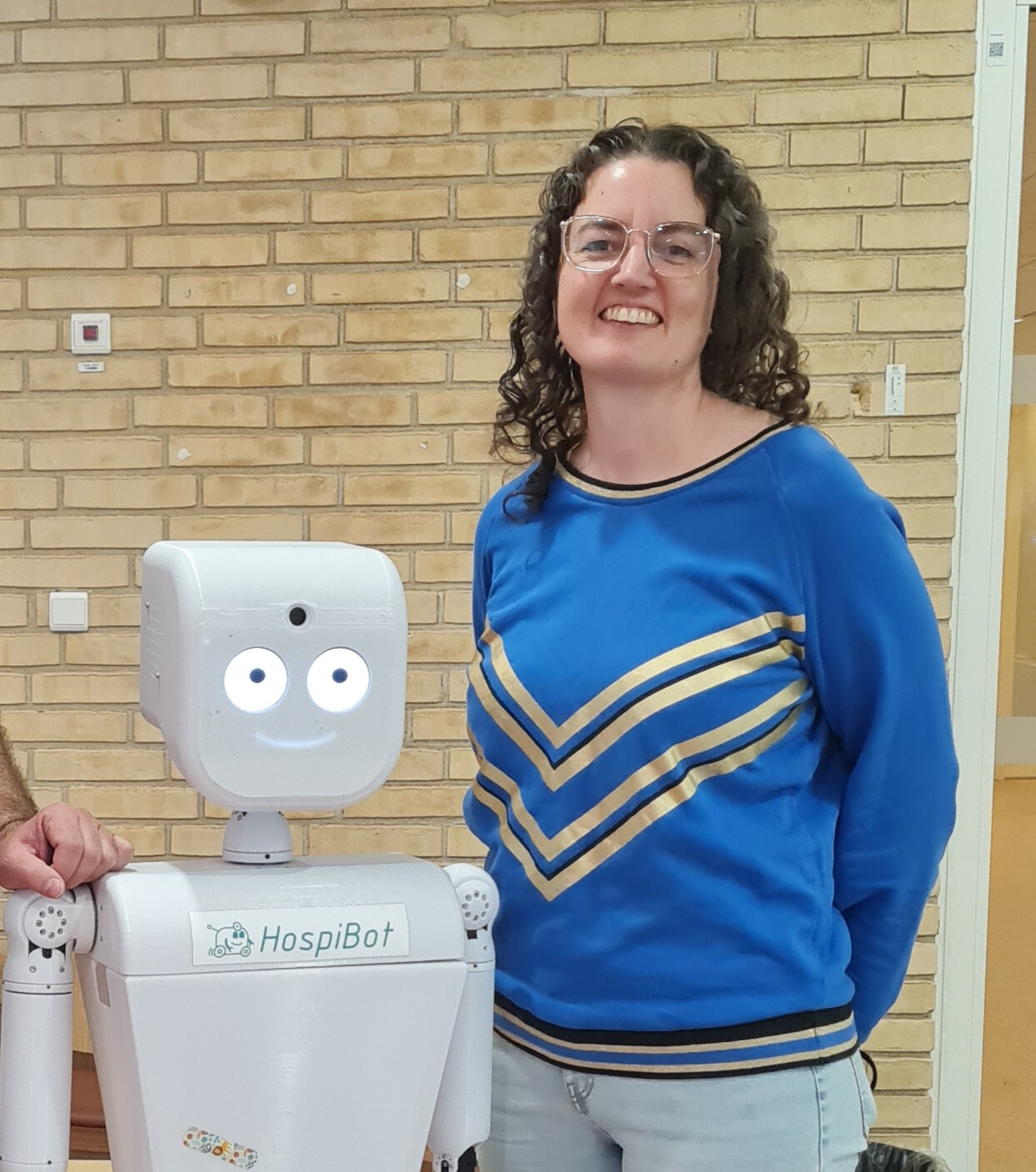
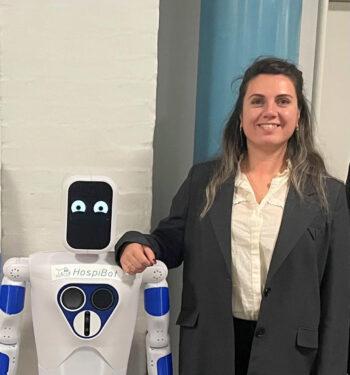
Some smaller tests were already conducted during the development phase. Dr. Franziska Uhing and Miriam Pfau from Kiel University of Applied Sciences accompanied one of them. Their role is to research the user interface of robots. Therefore they investigate how its interface can increase the willingness to interact with the robot.
Do people want to be looked at by a robot when they communicate with it?
Do they prefer to talk to the robot or rather type their answers on a display?
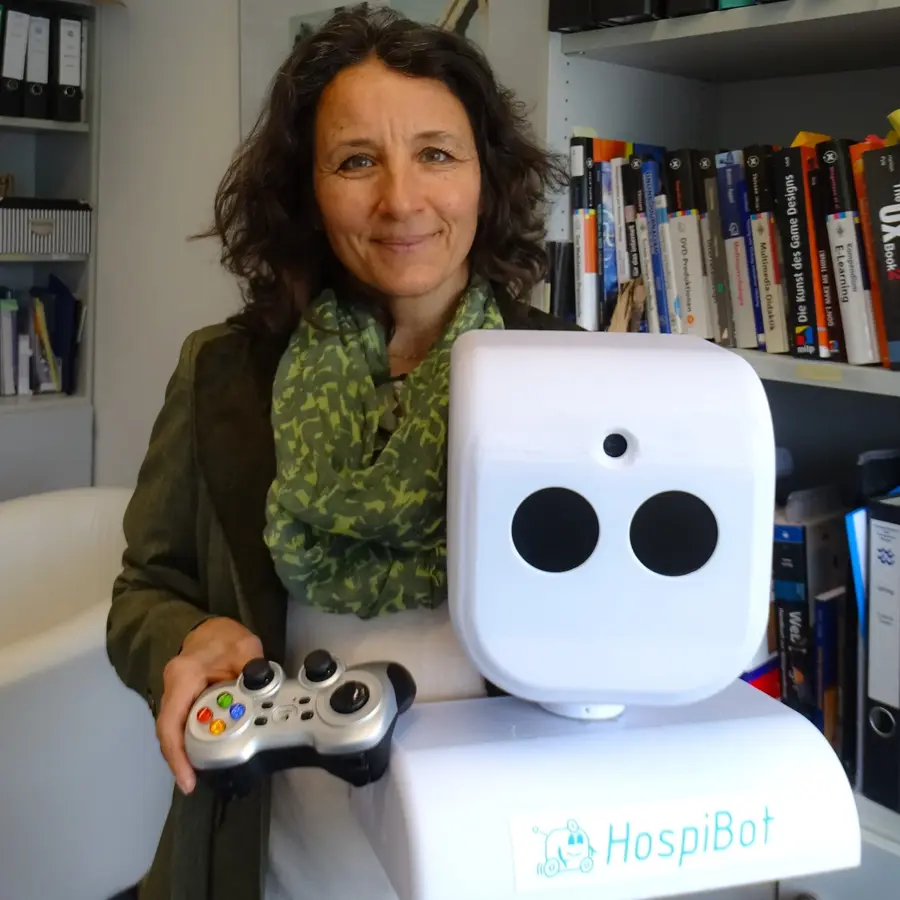
Common guidelines for healthcare robots
At the meeting’s conclusion, Dr. Arndt Peter Schulz, Head of Clinical & Regulatory Affairs at Fraunhofer IMTE, provided valuable insights into another key aspect of the project. In addition to developing and testing robotic solutions, HospiBot also aims to contribute to a general guideline for the use of robots in healthcare. This should lead to clearer regulations for the use of robots and, ideally, fewer bureaucratic hurdles for hospitals.
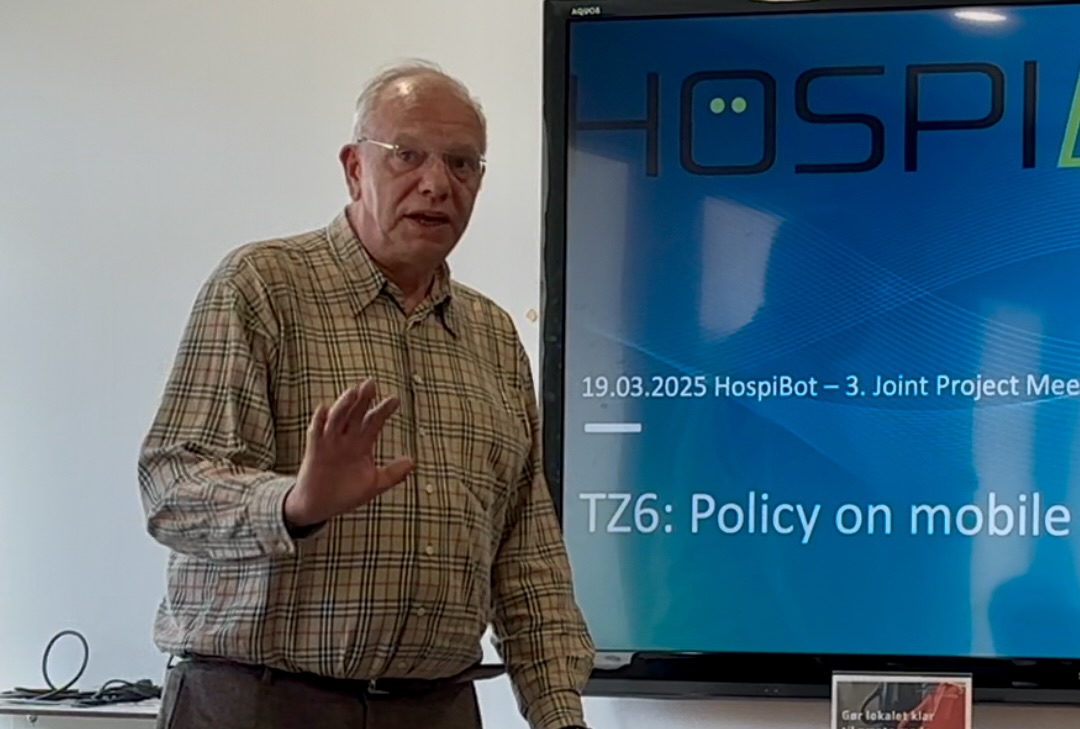
The next project meeting will take place in autumn 2025. By then, HospiBot will already have entered the testing phase of its developments. In the meantime, the project partners from southern Denmark and northern Germany are continuing their research into a joint response to demographic change and the challenges facing the healthcare systems in both countries.
